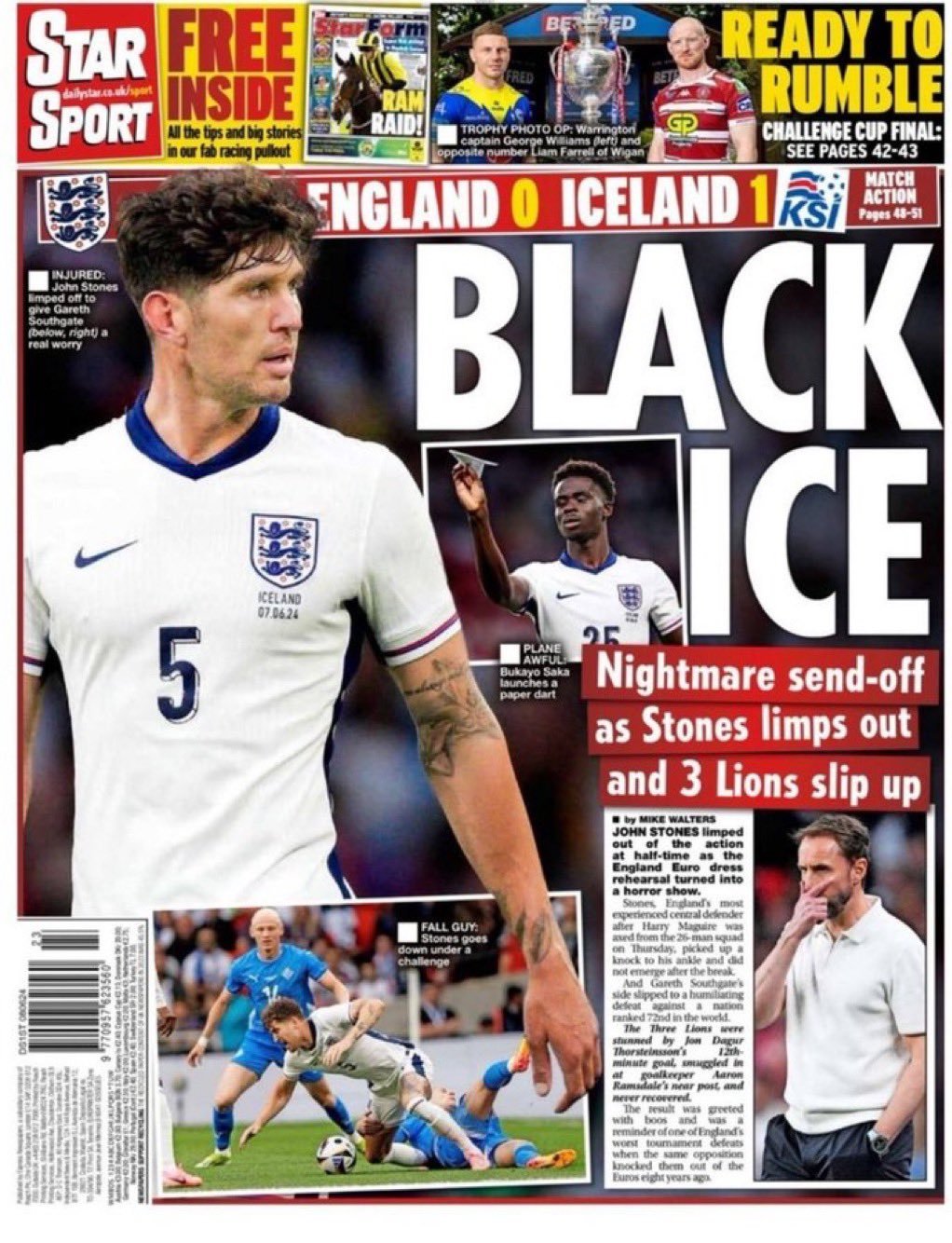Calacus Monthly Hit & Miss – Bukayo Saka and the English media
Every month we look at the best and worst communicators in the sports world from the last few weeks.
BUKAYO SAKA & THE ENGLISH MEDIA
When England drew with Iceland in their final match before the start of EURO 2024, the back pages and online news portals mostly featured images of Bukayo Saka, the Arsenal winger who had only been on the pitch in the latter stages of the game.
Saka was vilified when he missed England’s last penalty that ultimately handed Italy the EURO 2020 title, but the winger has shown dignity and talent consistently to underline his status as both a fine footballer and a great role model.
In the aftermath of the final defeat at Wembley, Saka received thousands of cards which were shown to him at Arsenal’s training ground to counter-balance the abuse and trolling he had experienced.
The following season, even fans of arch rivals Tottenham Hotspur applauded Saka and displayed a banner showing him their support and calling for an end to racism and discrimination.
The Tottenham fans have changed their tune recently, chanting “You let your country down!” during their 3-2 home defeat to Arsenal in late April, underlining the criticism Saka has continued to endure.
So why was Saka’s image used for that defeat to Iceland, despite only coming on in the 64th minute and not being on the field when the winning goal was conceded?
As Morgan Ofori wrote in The Guardian: “In some senses it is easy to see how this happened. The pictures of the Arsenal winger throwing a paper plane off the pitch – cue “Plane awful” headlines in the Daily Mail and Sun, and “England take a nosedive” in the Daily Telegraph – offered something different from the usual dejected player. Others featured a picture of Saka sprawled on the ground. Such decisions are made quickly by editors working to tight deadlines.
“Using a young black English player as the symbol of disappointment, regardless of his contribution to the result, carries baggage. Anyone covering the national team should be aware of the historic vilification of black players and the editorial line should be unapologetically anti-racist.”
Darren Lewis, President of the Sports Journalists’ Association and a fierce advocate for equality, wrote eloquently about the responsibility the media has not to scapegoat players undeserving of individual blame.
As he pointed out, England’s black players have faced challenges ever since John Barnes, Andy Cole and latterly Raheem Sterling put on the three lions shirt and faced disproportionate abuse when doing so.
He tweeted: “Just because I work in the media it doesn’t mean I can’t acknowledge the concern about Bukayo Saka being used as the face of England’s defeat and poor performance – despite other players performing worse – across a number of platforms last night. If anything it is even more my job.
“Especially when he was a) a substitute and b) one of the players targeted after England failed at the last Euros. It is a reminder that we need to think about EVERYTHING put into the public domain.”
Tony Burnett, CEO of Kick It Out, the anti-discrimination charity, called on the media to remember their responsibilities and said in an open letter: “Newspapers, websites and even national broadcasters chose to portray Bukayo Saka as the scapegoat – once again – for England’s defeat by Iceland.
“This was despite him playing a bit-part role in the game, and coming onto the field after the winning goal was scored. Has the media learned nothing?
“I shouldn’t need to remind you that the impact of black players being targeted in the media has a long history and is felt far and wide. It sends a message that they are not welcome, that they are only a misplaced kick from being vilified and it sends a message to online abusers that targeting players is fair game.
“But it also sends a message to fans from black and ethnic minority communities that they do not belong or can be abused too. Those points need to be considered when writing headlines or selecting images as deadlines approach. The words and pictures travel a long way, hitting harder than you might realise.
“The media needs to remember its responsibilities to not only report on discrimination but actively combat these issues and remind itself that it plays a crucial part in how players, fans and communities feel about themselves and their rightful place in football.”
Former Arsenal and England striker Ian Wright also posted: “Now more than ever let's get behind & support these young people. We can all see what's happening & who's being set up to be the face of defeat.
“We are going to be gas lit with explanations & justifications, but those deciding who goes on the back pages know what they’re doing. Let's keep our energy focused on giving these players pure love & support throughout the tournament.”
Of course, the media have to be allowed to make reasonable editorial decisions and have to be able to choose images based on fair and reasonable editorial planning.
But they also have a responsibility not to single out individuals or one group of players disproportionately when the inevitable consequence is that those players then get abused.
Some might argue that if you play sport at the highest level, you reap the financial rewards and so are fair game for criticism from the media and terraces.
When mistakes happen, when defeats occur, when disappointment reigns, players rightly come in for criticism. A black England footballer should not be immune from criticism if it is warranted.
But with division and culture wars becoming regrettably more prevalent, it’s time for the sports media to lead the way and set an example, rather than castigate young men who make a mistake - or not - on the field of play.


